Abstract
The range of relative affinity of antibody to HSA in mice from ten strains is presented. Previously reported high and low affinity strains are not exceptional.
Age, sex, dose and time after immunization have little effect on relative affinity of antibody to HSA and HST.
Antibodies, raised by injecting DNP-HSA or DNP-RSA, and tested by 3H-εDNP-L-lysine, show similar interstrain differences of affinity. This excludes recognition of only a limited proportion of the diverse antigenic sites on complex protein antigens as the sole explanation of this phenomenon.
Full text
PDF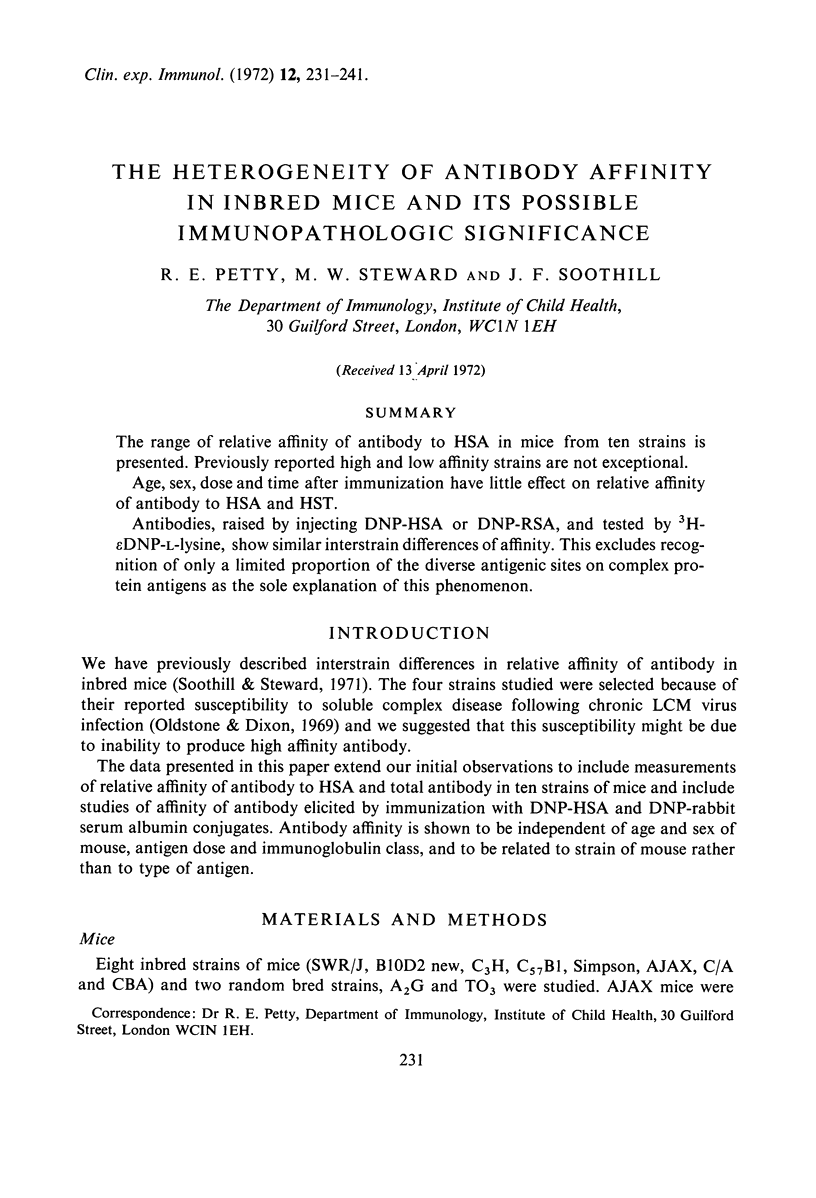
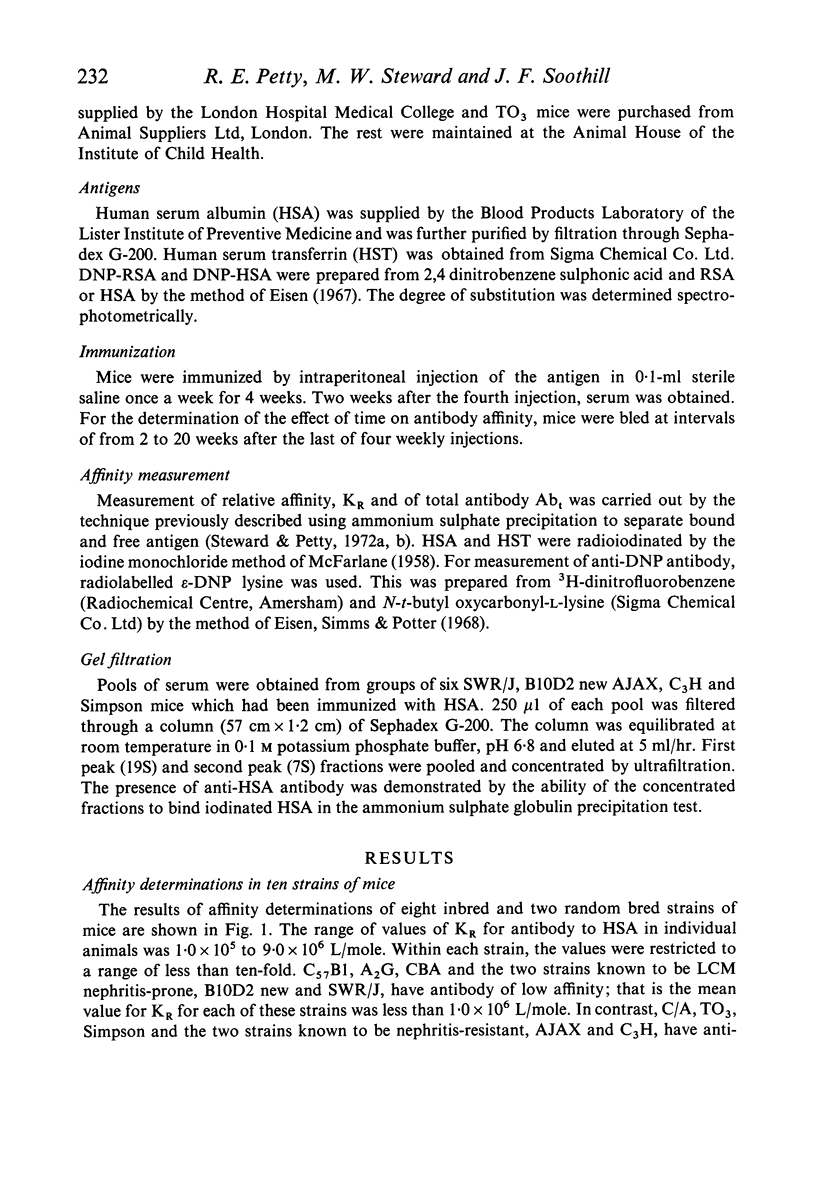
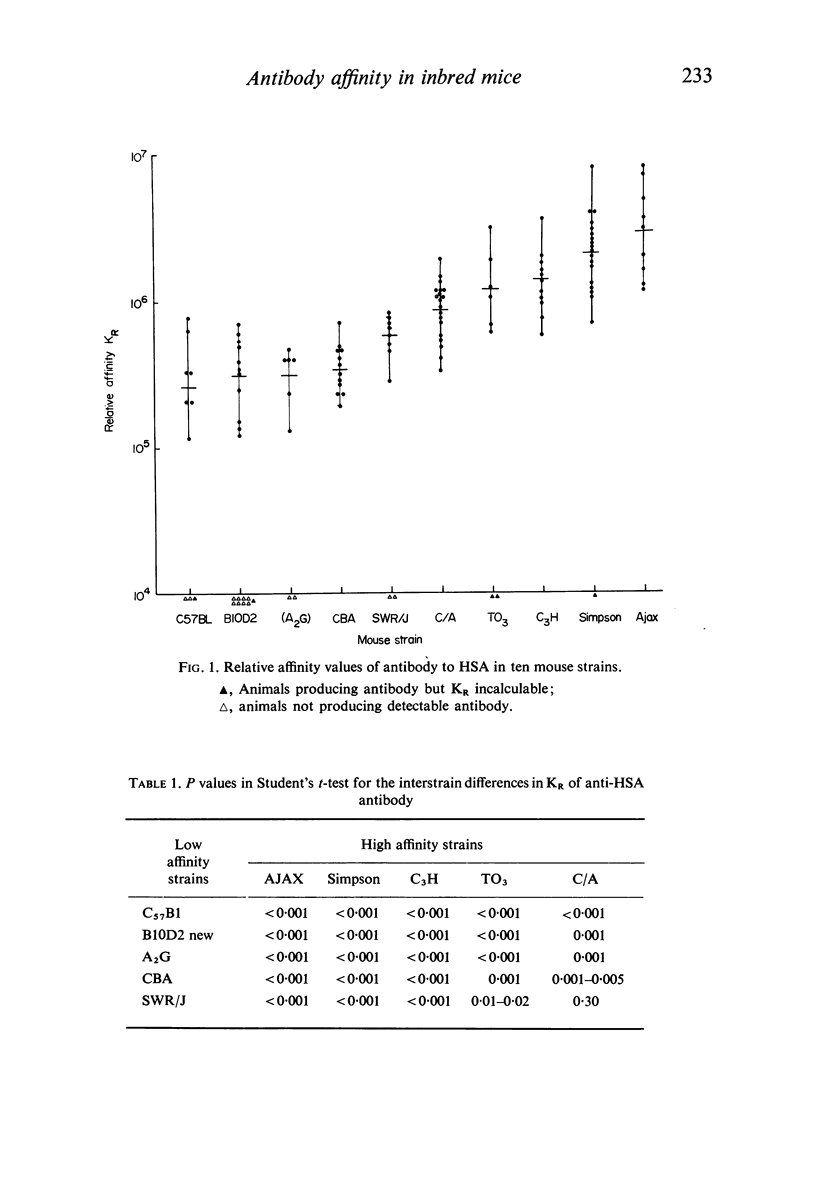
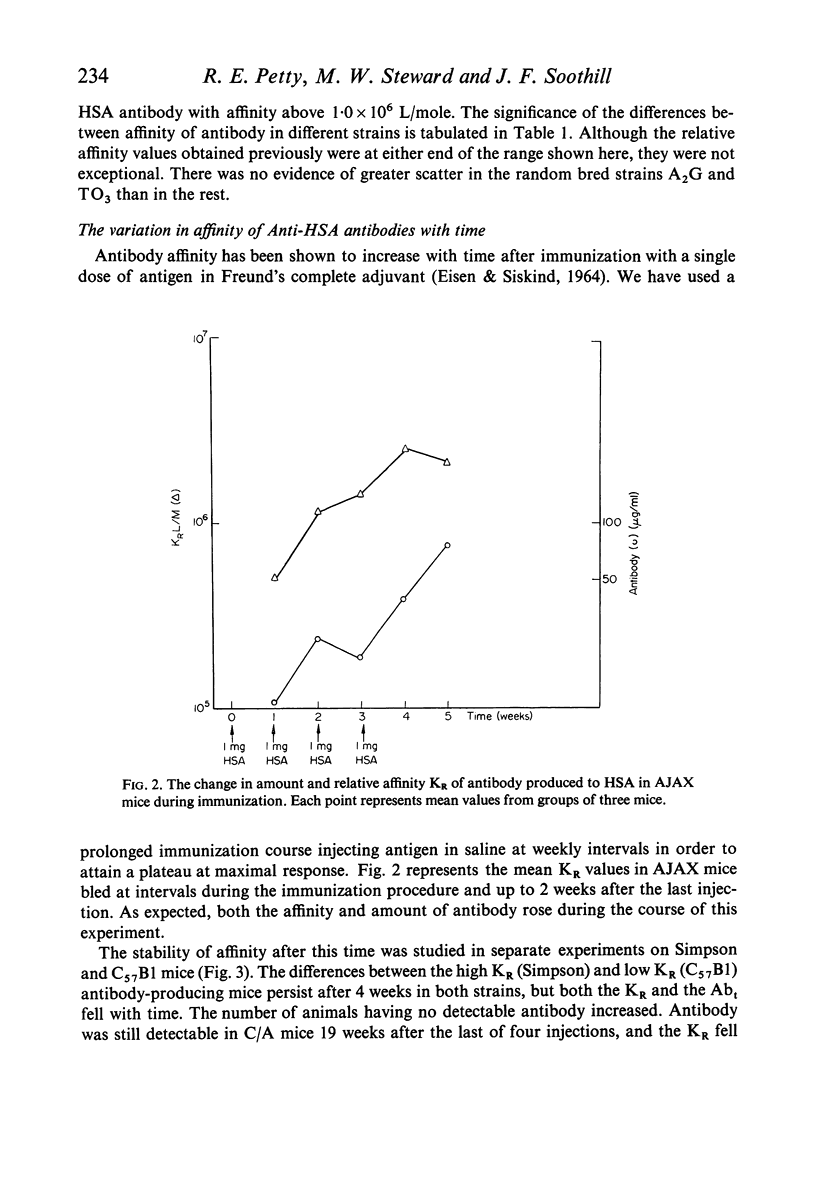
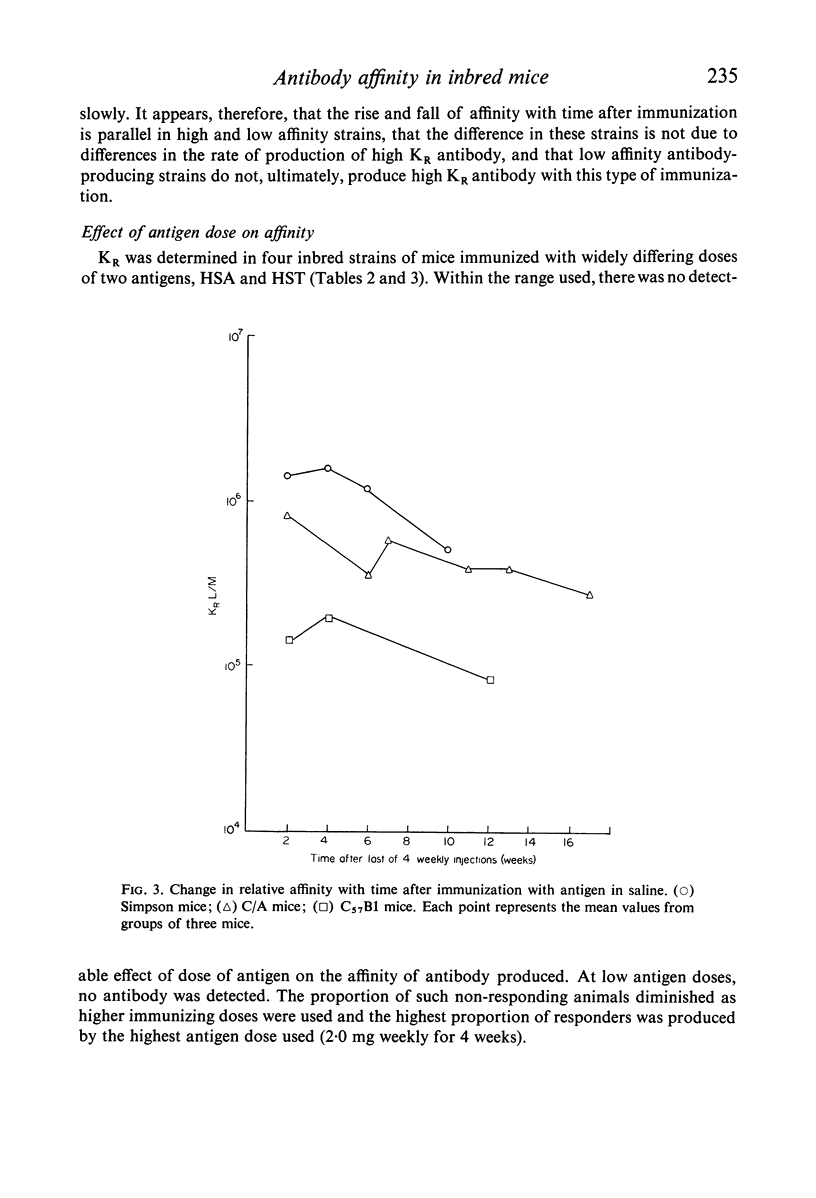
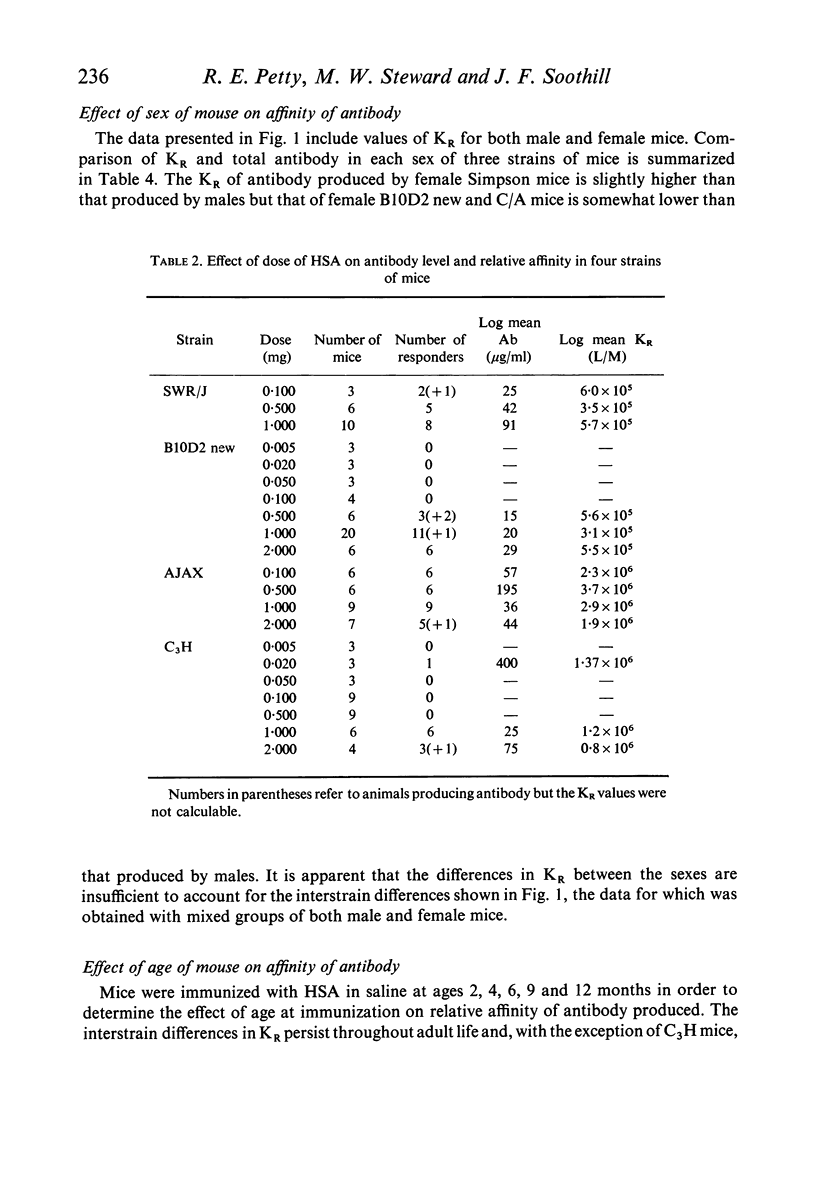
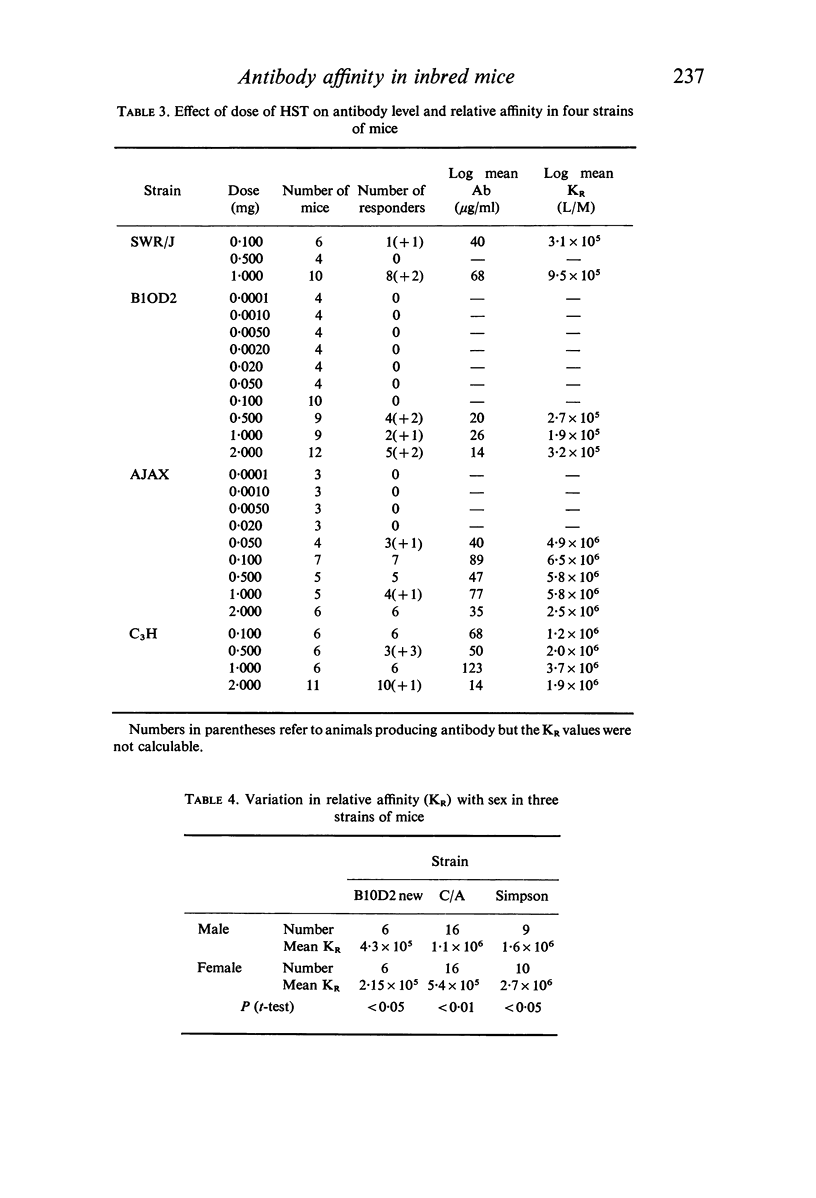
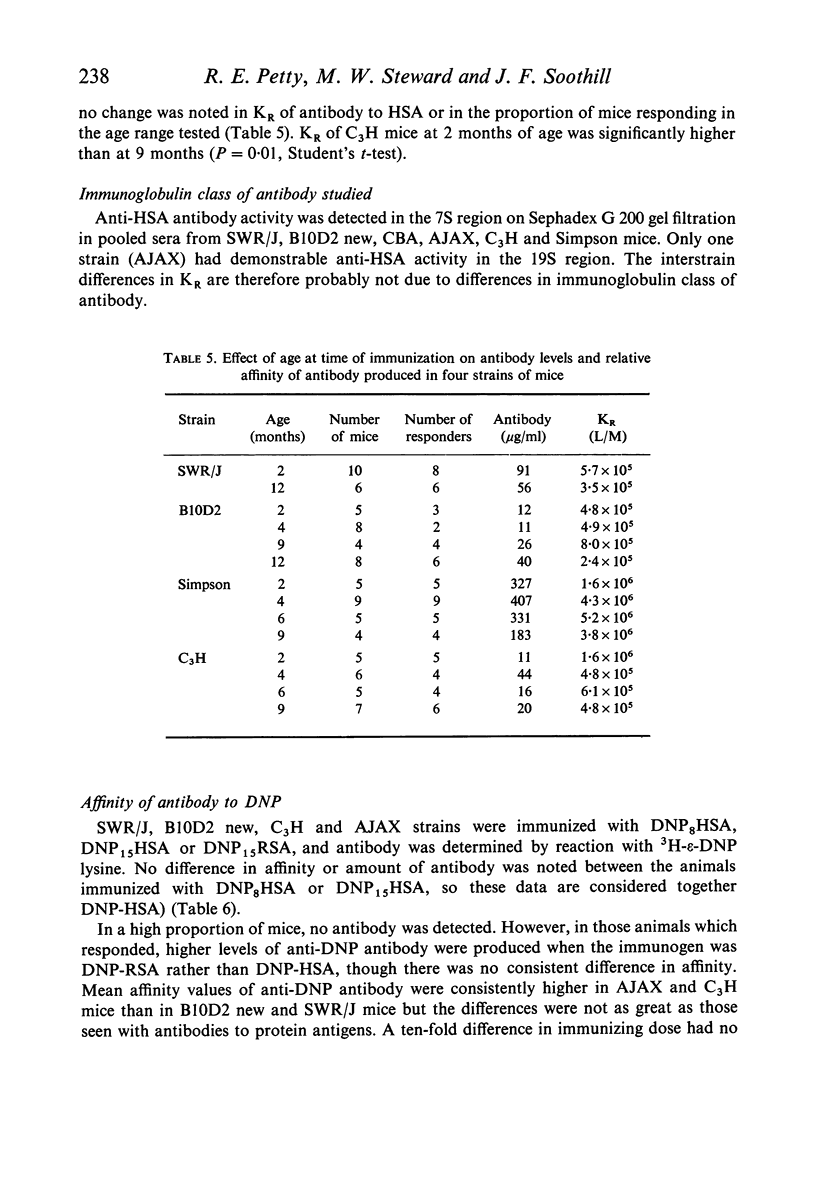
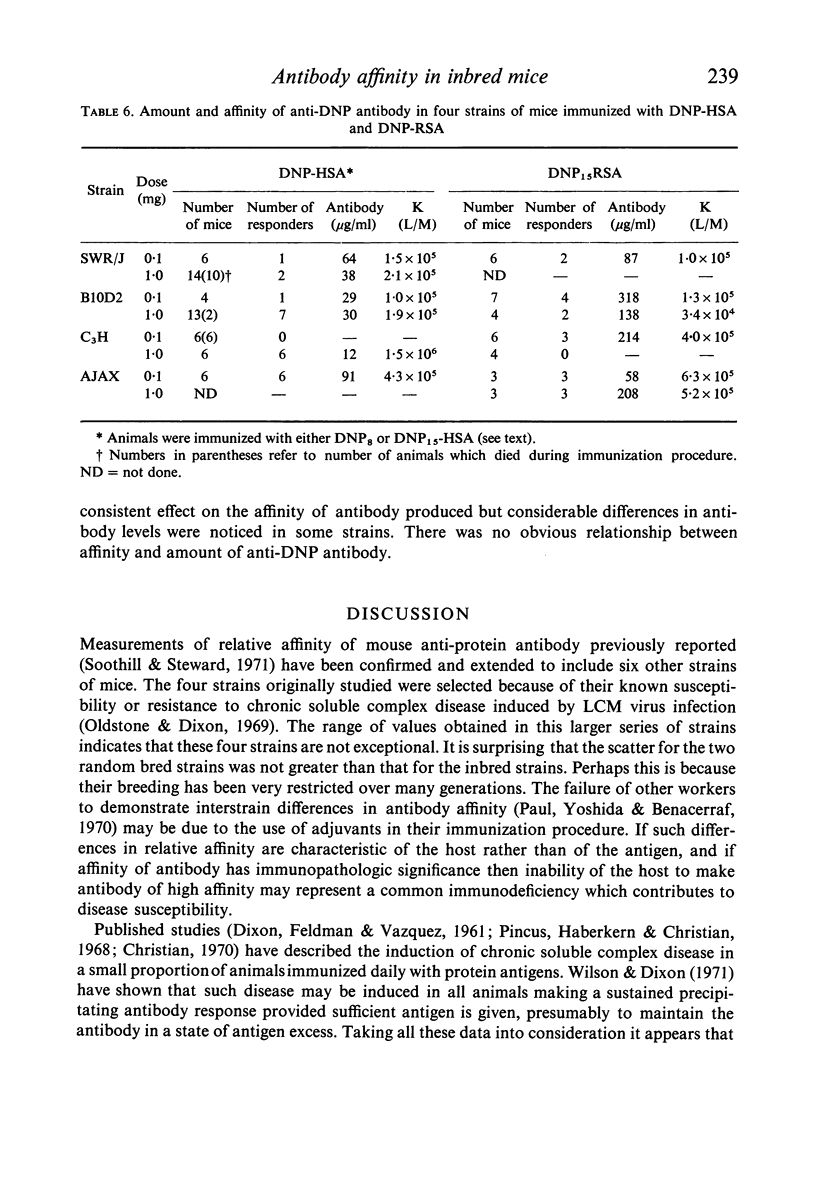
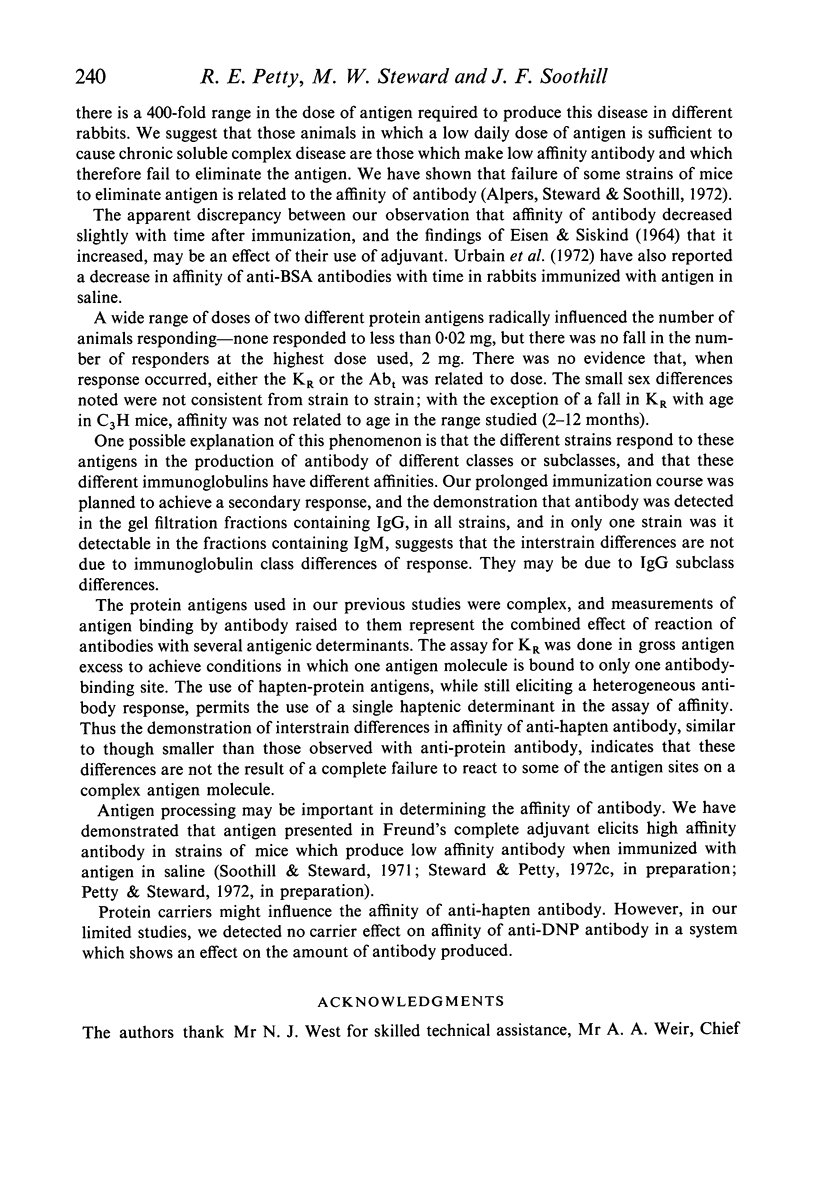
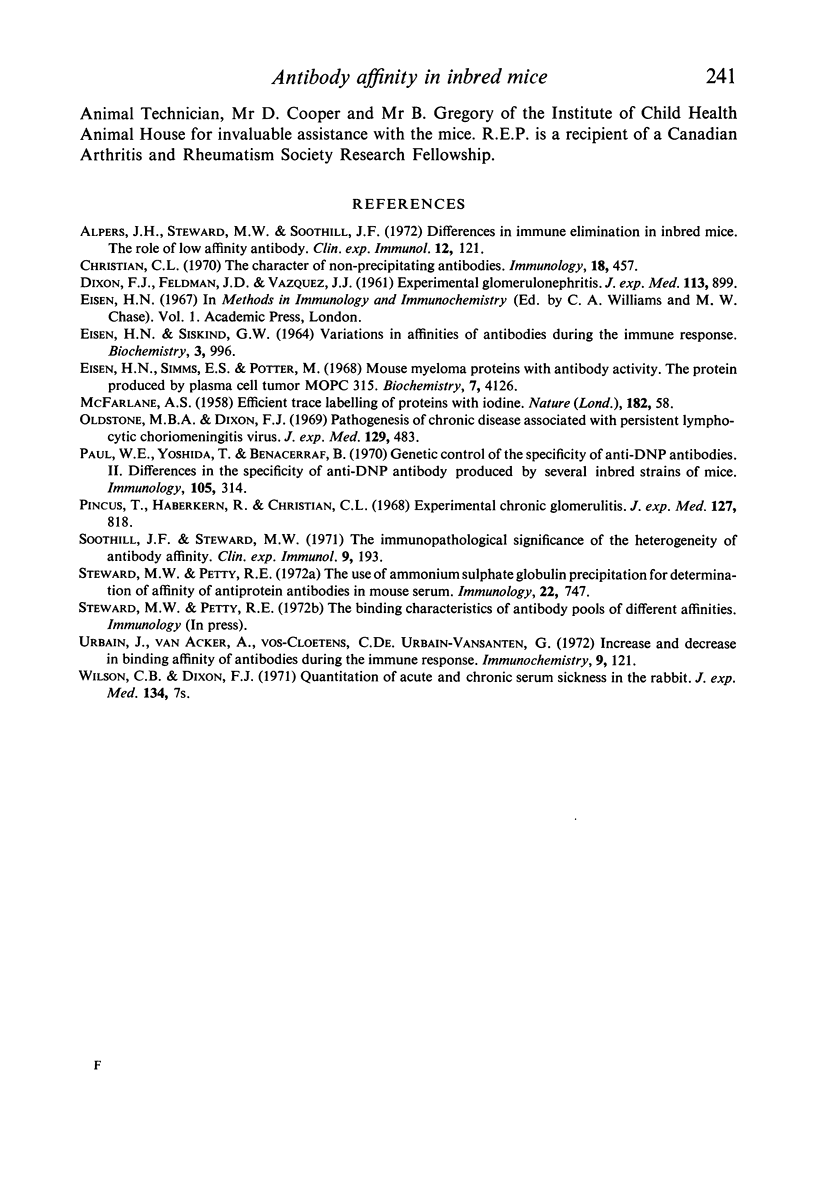
Selected References
These references are in PubMed. This may not be the complete list of references from this article.
- Alpers J. H., Steward M. W., Soothill J. F. Differences in immune elimination in inbred mice. The role of low affinity antibody. Clin Exp Immunol. 1972 Sep;12(1):121–132. [PMC free article] [PubMed] [Google Scholar]
- Christian C. L. Character of non-precipitating antibodies. Immunology. 1970 Apr;18(4):457–466. [PMC free article] [PubMed] [Google Scholar]
- DIXON F. J., FELDMAN J. D., VAZQUEZ J. J. Experimental glomerulonephritis. The pathogenesis of a laboratory model resembling the spectrum of human glomerulonephritis. J Exp Med. 1961 May 1;113:899–920. doi: 10.1084/jem.113.5.899. [DOI] [PMC free article] [PubMed] [Google Scholar]
- EISEN H. N., SISKIND G. W. VARIATIONS IN AFFINITIES OF ANTIBODIES DURING THE IMMUNE RESPONSE. Biochemistry. 1964 Jul;3:996–1008. doi: 10.1021/bi00895a027. [DOI] [PubMed] [Google Scholar]
- Eisen H. N., Simms E. S., Potter M. Mouse myeloma proteins with antihapten antibody acitivity. The protein produced by plasma cell tumor MOPC-315. Biochemistry. 1968 Nov;7(11):4126–4134. doi: 10.1021/bi00851a048. [DOI] [PubMed] [Google Scholar]
- Oldstone M. B., Dixon F. J. Pathogenesis of chronic disease associated with persistent lymphocytic choriomeningitis viral infection. I. Relationship of antibody production to disease in neonatally infected mice. J Exp Med. 1969 Mar 1;129(3):483–505. doi: 10.1084/jem.129.3.483. [DOI] [PMC free article] [PubMed] [Google Scholar]
- Paul W. E., Yoshida T., Benacerraf B. Genetic control of the specificity of anti-DNP antibodies. II. Differences in the specificity of anti-DNP antibody produced by several inbred strains of mice. J Immunol. 1970 Aug;105(2):314–321. [PubMed] [Google Scholar]
- SCHOFIELD B. M. Effect of the synthetic oestrogen stilboestrol on pregnancy in the rabbit. Nature. 1958 Jul 5;182(4627):58–59. doi: 10.1038/182058a0. [DOI] [PubMed] [Google Scholar]
- Soothill J. F., Steward M. W. The immunopathological significance of the heterogeneity of antibody affinity. Clin Exp Immunol. 1971 Aug;9(2):193–199. [PMC free article] [PubMed] [Google Scholar]
- Steward M. W., Petty R. E. The use of ammonium sulphate globulin precipitation for determination of affinity of anti-protein antibodies in mouse serum. Immunology. 1972 May;22(5):747–756. [PMC free article] [PubMed] [Google Scholar]
- Urbain J., Van Acker A., De Vos-Cloetens C., Urbain-Vansanten G. Increase and decrease in binding affinity of antibodies during the immune response. Immunochemistry. 1972 Feb;9(2):121–136. doi: 10.1016/0019-2791(72)90033-x. [DOI] [PubMed] [Google Scholar]
- Wilson C. B., Dixon F. J. Quantitation of acute and chronic serum sickness in the rabbit. J Exp Med. 1971 Sep 1;134(3 Pt 2):7s–8s. [PubMed] [Google Scholar]


